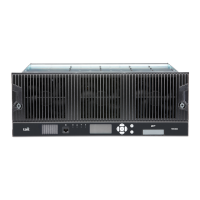42 General Safety and Regulatory Information TB9300 Installation and Operation Manual
© Tait International Limited April 2024
■ Creating robust firewalls (particularly in situations where the base
station uses an ephemeral source port)
■ Setting up and using signed web certificates (refer to the WebUI for
instructions)
■ Setting up and using ‘Custom alarms’ to pass on indications from
building or rack security if they do not have their own monitoring paths
(smoke detectors, door alarms, etc.). See “Connecting General Purpose
Inputs and Outputs” on page 87.
2.3 Environmental Conditions
2.3.1 Operating Temperature Range
The operating temperature range of the equipment is –22°F to +140°F
(–30°C to +60°C) ambient temperature. Ambient temperature is defined as
the temperature of the air at the intake to the cooling fans.
2.3.2 Humidity
The humidity should not exceed 95% relative humidity through the
specified operating temperature range.
2.3.3 Dust and Dirt
For uncontrolled environments, the level of airborne particulates must not
exceed 100µg/m
3
.
2.4 Regulatory Information
2.4.1 Distress Frequencies
The 406 to 406.1MHz frequency range is reserved worldwide for use by
Distress Beacons. Do not program transmitters to operate in this frequency
range.
2.4.2 Compliance Standards
This equipment has been tested and approved to various national and
international standards. Refer to the latest issue of the Specifications
Manual for a complete list of these standards.

